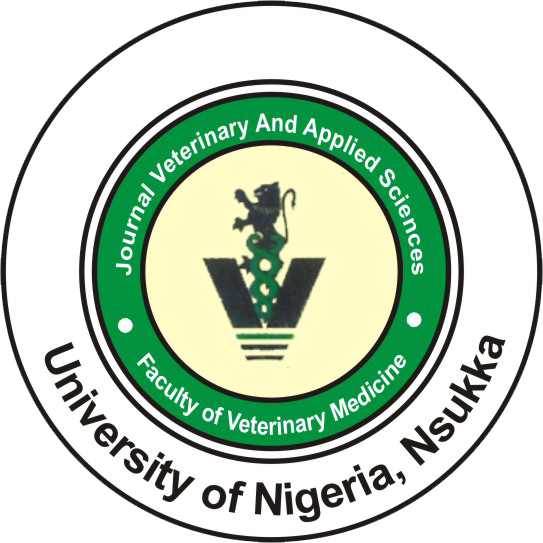University of Nigeria
ISSN: 2315 - 6856
e-ISSN: 2636 - 5553
Journal volumes
Powered by: RockSystems Global Services Ltd.
rocksystemsglobal@gmail.com (+2348035271306)
www.rocksystemsglobal.com
Volume 13, Issue 2: 2023 - Article 11
Evaluation of the haematology and serum biochemistry profile of albino rats fed diets composed of cowhide processed by various singeing methods
Fatima Sanusi1 ⁎, Abigail C. Abwage2, Babatunde S. Okediran1, Yusuf K. Suleiman1, Yusuf Idris1
1 Department of Veterinary Physiology and Biochemistry, Faculty of Veterinary Medicine,
University of Ilorin, Ilorin, Nigeria.
2 Department of Forestry and Wildlife Management, Faculty of Agriculture, Taraba State University, Jalingo. Taraba State, Nigeria.
Abstract
Singeing cowhide is the first step in producing hide, a staple food component in Nigeria. This study investigated the haematological and serum biochemical alterations associated with feeding albino rats with diets composed of cowhide processed by various singeing methods. Thirty male rats randomly allocated into six groups (A – F) of five rats each, were used for the study. Group A rats served as the control that was not given feed with singed hide. Rats in Groups B – F were fed on diets with cowhide processed as follows: B – Shaving only; C – Shaving after tenderization with detergent; D – Singeing with petrol fire and washing with detergent; E – Singeing with kerosene fire and washing with detergent, F – Singeing with spent tyre fire and washing with detergent. The cowhide inclusion in diet was at the ratio of 40% hides: 60% commercial feed. The rat groups were fed ad lib with their group-specific diets for four weeks, after which blood samples were collected for haematology and serum biochemistry evaluations. Results showed that there were no significant variations (p > 0.05) in the mean body weights of the rat groups all through the experimental period. Rats in Group D had significantly (p < 0.05) lower red blood cell counts, haemoglobin concentration and packed cell volume, and significantly (p < 0.05) higher total white blood cell (TWBC), neutrophil and lymphocyte counts. Group F rats had significantly (p < 0.05) higher TWBC and lymphocyte counts, while Groups C and E rats had significantly (p < 0.05) lower TWBC, neutrophil and lymphocyte counts. Groups C, D, E and F rats had a significantly lower (p < 0.05) serum total cholesterol, while Group E alone had significantly (p < 0.05) higher serum creatinine levels. Groups E and F also had significantly higher (p < 0.05) serum glutathione peroxidase activity. It was concluded that feeding albino rats with cowhide processed by certain singeing methods as used in the study led to significant alterations in some of the haematology and serum biochemical parameters.
Keywords: Singeing, Cowhide, Haematology; Serum Biochemistry, Petrol, Kerosene, Spent tyre.
How to cite this article:
Sanusi F, Abwage AC, Okediran BS, Suleiman YK and Idris Y (2023). Evaluation of the haematology and serum biochemistry profile of albino rats fed diets composed of cowhide processed by various singeing methods. Journal of Veterinary and Applied Sciences, 13(2): 260 – 272.
* Correspondence: E-mail: sanusi.f@unilorin.edu.ng Phone: +2348067650602
Download .pdf copy here >>






